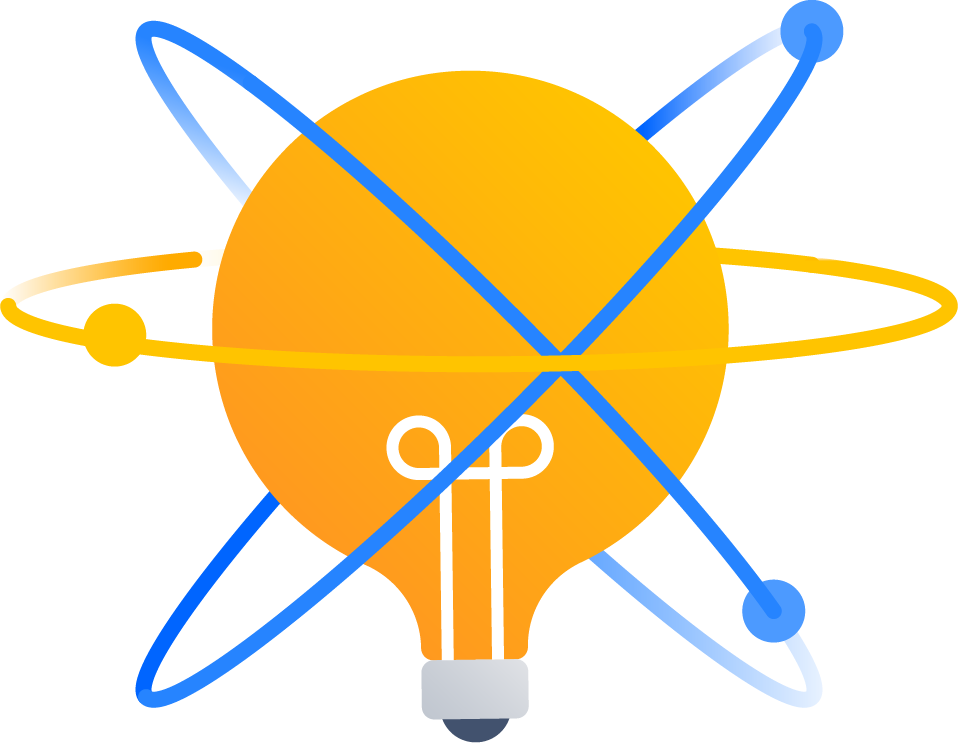How to run a brainstorming session
That actually produces good ideas
Browse topics
Brainstorming sessions are essential for generating creative ideas and solving complex problems. Whether you’re looking to innovate new products, improve existing processes, or develop strategic plans, a well-structured brainstorming session can help generate as many ideas as possible, unleashing your team’s potential.
This guide provides an overview of the key steps to organize and execute a productive brainstorming session, from setting clear goals and gathering the right team to using effective tools and maintaining momentum.
What is a brainstorming session?
A brainstorming session is a collaborative meeting where team members generate creative ideas and solutions through open and free-flowing discussions. The primary goal is to encourage diverse perspectives and innovative thinking without immediate judgment or criticism, allowing for a wide range of ideas to be explored.
By fostering an inclusive and supportive environment, brainstorming sessions can uncover unique insights and drive meaningful progress on various projects and challenges. A brainstorming template simplifies the process and ensures discussions remain productive.
How do you structure a brainstorming session?
The concept of a classic brainstorming meeting, initiated by Alex Osborn in 1939, was designed to enhance idea generation for advertising through a structured session where participants share and evaluate ideas without criticism. To ensure a productive and effective brainstorming session, follow these structured steps to guide your team from initial goal setting to actionable outcomes.
Step 1. Identify your goal
While brainstorming can be exciting, staying within the boundaries of your business goals is best. You should only call a brainstorming session if there’s a.) something specific you’re trying to achieve and b.) you’re prepared to take action on the ideas presented.
Summarize your goal in a sentence or two, like “determine ways that we can reduce our response time to customer tickets” or “plan three key marketing campaigns for next quarter.” The primary objective should be generating ideas that align with your goals.
Share your goal with anyone who will be participating in the meeting. Create an agenda for the brainstorming session that includes the summary and a loose schedule for the conversation. Let everyone know beforehand (not that morning) what the meeting is about so they can be prepared.
Step 2. Gather the right team

Save your colleagues’ creativity for the brainstorming session, not for wondering why they are sitting in your meeting. A survey of over 800 teams found that too many minds in one room can lead to “social loafing” or letting a few star players do all the work and little to no contributions from everyone else.
The more people in your meeting that don’t know why they are there, the poorer quality brainstorm you’ll get. Let your colleagues keep their free time if you can’t point to something specific you hope they’ll bring to the table. This is especially important if they won’t be responsible for owning a piece of the outcome.
In addition to listing the meeting's goal, make sure everybody invited understands why you want them there to foster diverse ideas.
Step 3. Set the stage
It’s easy to auto-default to the same old conference room whenever you need to call a meeting. Stimulating your team's creative juices is essential for effective brainstorming and idea generation. But our brains love novelty, and being in a new location can also exercise our brain’s neuroplasticity or ability to think about things in a new way.
By switching locations, you can improve the quality of ideas generated during the brainstorming session. Try heading out to the picnic table behind the office, the cafe around the corner, or even a different room in your workspace. If you can’t access an alternative meeting space, add a new element to the old routine.
Switch up those unspoken claims about whose chair is whose or become the office MVP with a surprise treat. Opinions on the best runtime of a brainstorming session vary and depend on the individual team(s).
Would 30 minutes work best for a deadline-driven team, or would they prefer an hour to let the ideas free flow? Are they fresher in the morning or with post-lunch fuel in the tank? Try a few variations to find what works best for your group.
Step 4. Pick a qualified facilitator

If a team meets for a brainstorm and no one leads it, did it even happen? Brainstorming sessions are collaborative conversations, but you still need somebody in charge.
A brainstorming facilitator should have the following:
- Great listening skills to fully absorb ideas
- Time management skills to keep the meeting on track
- Organizational skills to create an agenda and record ideas
- Leadership skills to encourage all members to participate
Before the meeting, decide if you should lead or if someone else is better suited to the task. Remember that the facilitator’s role is to be a neutral party who keeps the session moving forward and the participants focused, ensuring a successful brainstorming session.
Step 5. Find the right tools
Choosing the right tools for your brainstorming session can significantly impact its success. Look for tools that support real-time collaboration, allow for easy organization of ideas, and integrate well with your existing workflows.
Confluence makes it easy to facilitate a productive session with a built-in brainstorming template. It offers an infinite canvas for teams to create and collaborate freely, providing the flexibility needed to move from idea to execution. Confluence also helps bridge the gap between brainstorming and implementation by allowing teams to visually organize their work and turn ideas into actionable plans.
Whether you’re diagramming, journey mapping, planning, or running retrospectives, Confluence offers a variety of best-practice templates and a rich array of visual elements like Smart Links, stamps, and stickers to help bring your team’s thoughts to life. Additionally, its seamless integration with other Atlassian tools ensures that your brainstorms don’t get lost but transition smoothly into structured, actionable tasks.
Step 6. Make sure everyone participates

You called everyone into the meeting for a reason, and your goal is to hear from all of them. However, some people are naturally more reserved or introverted. Establish the ground rules for the meeting at the start to ensure no one feels bowled over. For instance, outlaw criticism of other peoples’ ideas.
Team members who feel a sense of psychological safety will be more likely to suggest innovative ideas. Ask participants to build on ideas that were just suggested; research proves it increases team cohesiveness. Encourage everyone to express their own ideas to ensure a diverse range of creative solutions.
To ensure it’s not all work and no play, loosen up the creative flow with a lighthearted icebreaker to get your attendees into the right frame of mind.
Step 7. Don't stop when the meeting ends
Brainstorming only works if you use the fresh ideas you’ve created. Maintain that momentum by committing to a few follow-up actions as a team. Assign owners to these action items in Confluence and attach due dates to move work forward. To go the extra mile, send a survey or ask for feedback about the brainstorming session to improve future conversations.
Maximizing Your Brainstorming Sessions for Success
With thorough preparation and effective execution, your teams can generate incredible ideas during brainstorming sessions. Embracing unconventional ideas and encouraging participants to think outside the box can lead to groundbreaking solutions and foster a mindset free from constraints.
Regular practice and refinement will enhance your team’s ability to produce innovative solutions. Keep sessions dynamic and evolving to meet new challenges, ensuring each meeting is a learning experience that brings you closer to your next great idea. By following this guide, you’ll facilitate productive, inspiring, and effective brainstorming sessions.
Remember, the sky’s the limit regarding what your team can achieve with the right approach to brainstorming. Enhance your brainstorming sessions today with Confluence.

